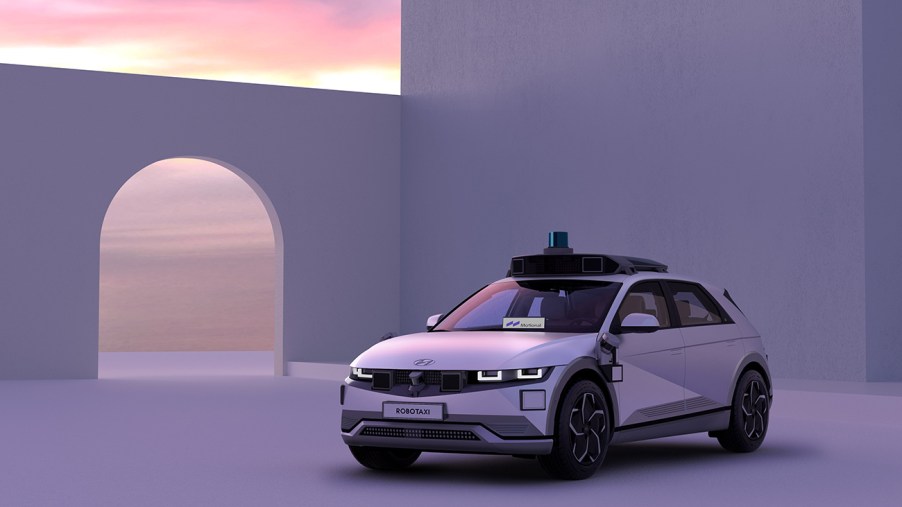
Hyundai IONIQ 5: The Next Robotaxi
Autonomous vehicles will be commonplace before we know it. Even now, several firms are testing autonomous technology on public streets to prime themselves for mass adoption. Baseline forms of autonomous tech can already be found in several vehicles on the road today such as semi-trucks.
The direction that autonomous technology firms are going in currently is towards ride-hailing. Imagine taking your smartphone out of your pocket or purse and using an app to call an electric vehicle to pick you up and take you to your destination all without a driver behind the wheel. At first, it may seem that having an autonomous vehicle for that situation is unnecessary but considering that there are only so many human drivers on the road and that a software-based driver can provide service at virtually any time of the day, the prospect begins to make sense.
Since tech firms are so focused on perfecting the software and specialized hardware that autonomous driving requires, they do not quite have the bandwidth to create their own vehicles from the ground up. That is why tech companies are partnering with existing automotive manufacturers to speed up the process of putting autonomous ride-hailing vehicles or “robotaxis” on the road. For example, Waymo partnered with Jaguar to equip a fleet of I-Pace EVs with their robotaxi tech.
The latest OEM to get in on the driverless action is Hyundai who recently announced a joint effort with autonomous driving technology firm Motional.
Hyundai IONIQ 5 Robotaxi

The Hyundai IONIQ 5 robotaxi is the result of Hyundai’s partnership with Motional. One glance at the exterior of the IONIQ robotaxi shows all of the sensors required for Motional’s autonomous driving technology to navigate city streets with no human interaction. There are more than 30 sensors in total – a combination of cameras, radars, and lidar – that give the IONIQ 5 robotaxi 360-degree vision and ultra-long-range object detection for optimal safety in various driving environments. The Hyundai IONIQ 5 robotaxi will get “smarter” with experience due to Motional’s machine learning software which already has a baseline of knowledge based on “decades of real-world data” according to Motional.
The Hyundai IONIQ 5 robotaxi’s interior has been redesigned to better suit an environment for passengers to relax and interact with each other. Not quite at the level of a mobile lounge but as close as to it as possible while still keeping passengers safe.
Robotaxi Research and development

The Hyundai IONIQ 5 robotaxi was “built from the ground up” in partnership with Motional to ensure that the finished product can be officially deemed as “fully driverless.”
“This robotaxi represents Motional’s vision of a driverless future becoming a reality,” said Motional President and CEO Karl Iagnemma. “Through our strategic partnership with Hyundai Motor Group and Aptiv, we have unparalleled automotive and software expertise across our entire vehicle development process. This deep collaboration enables us to manufacture a robotaxi that’s both highly safe and reliable, and is cost-optimized for global production. We’re focused on mass commercialization, and the IONIQ 5 robotaxi is built for that purpose.”
It is clear that autonomous vehicles will arrive en masse in the near future but with the technology still emerging, will the public feel safe enough to allow code to take the wheel?
That remains to be seen.


